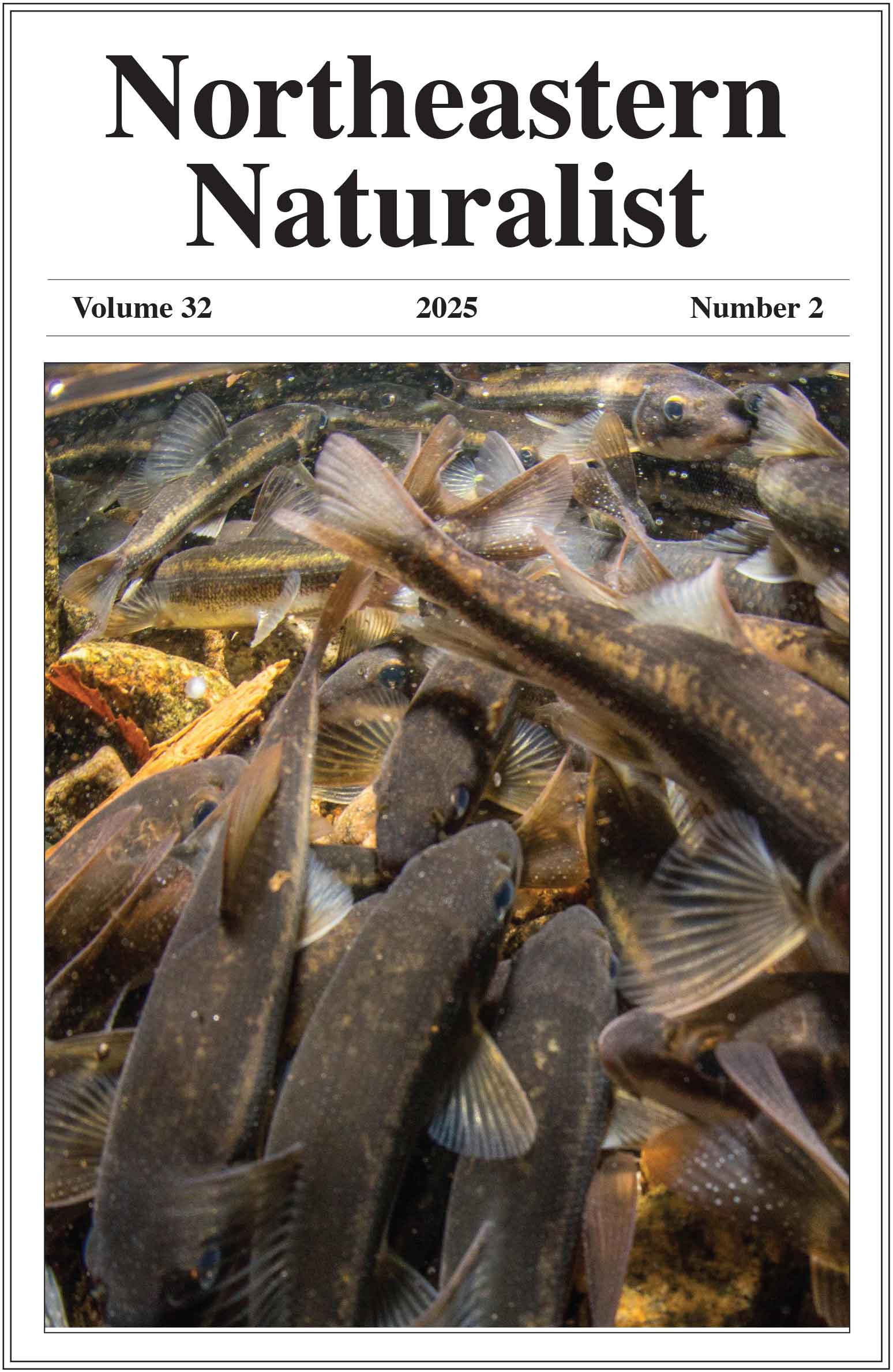A New Record of Atlantic Bluefin Tuna (Thunnus thynnus) Consuming a Seabird in the Northwest Atlantic Ocean
Nathan D. Stewart1,*, Louise Chavarie1,2, Alex Hanke1,3, Ana Storch4, François Turcotte5, and Aaron T. Fisk1
1Kentucky Department of Fish and Wildlife Resources, Frankfort, KY 40601.2Norwegian University of Life Sciences, NMBU, Faculty of Environmental Sciences and Natural Resource Management, PO Box 5003, NO-1432 Ås, Norway. 3Fisheries and Oceans Canada, St. Andrews Biological Station, 125 Marine Science Drive, St. Andrews, NB E5B 0E4, Canada. 4Fisheries and Oceans Canada, North Atlantic Fisheries Centre, 80 East White Hills Road, St. John’s, NL A1A 5J7, Canada. 5Fisheries and Oceans Canada, Gulf Fisheries Centre, 343 Université Avenue, Moncton, NB E1C 9B6, Canada. *Corresponding author.
Northeastern Naturalist, Volume 31, Issue 4 (2024): N42–N50
First published early online: 4 December 2024
Abstract
Thunnus thynnus (Atlantic Bluefin Tuna) is an opportunistic generalist predator in the pelagic zone of the Atlantic Ocean. In the northwest Atlantic Ocean, Atlantic Bluefin Tuna diets are primarily based on small pelagic prey. Seabirds often prey on the same pelagic forage fish as tuna, leading to an overlap in the timing and location of both seabird and Atlantic Bluefin Tuna foraging activity and the potential for tuna–seabird interactions. Here, we present the first documented evidence of Atlantic Bluefin Tuna consuming a seabird in the Northwest Atlantic Ocean. This is the second report of Atlantic Bluefin Tuna consuming a seabird in the entire species’ range. The evidence for this interaction comes from the stomach contents of a commercially harvested Atlantic Bluefin Tuna caught ~1.6 km offshore of Newfoundland in October 2022. The unknown bird in the Atlantic Bluefin Tuna stomach was identified through DNA metabarcoding as Fratercula arctica (Atlantic Puffin), a diving seabird for which an overlap with pelagic predatory fish is credible. While rarely observed, it is important to identify such interactions between seabirds and predatory fish to gain a more complete understanding of food-web interactions in marine pelagic ecosystems.
![]() Download Full-text pdf (Accessible only to subscribers. To subscribe click here.)
Download Full-text pdf (Accessible only to subscribers. To subscribe click here.)
Access Journal Content
Open access browsing of table of contents and abstract pages. Full text pdfs available for download for subscribers.
Issue-in-Progress: Vol. 32 (3) ... early view
Check out NENA's latest monograph and Special Issue:













 The Northeastern Naturalist is a peer-reviewed journal that covers all aspects of natural history within northeastern North America. We welcome research articles, summary review papers, and observational notes.
The Northeastern Naturalist is a peer-reviewed journal that covers all aspects of natural history within northeastern North America. We welcome research articles, summary review papers, and observational notes.